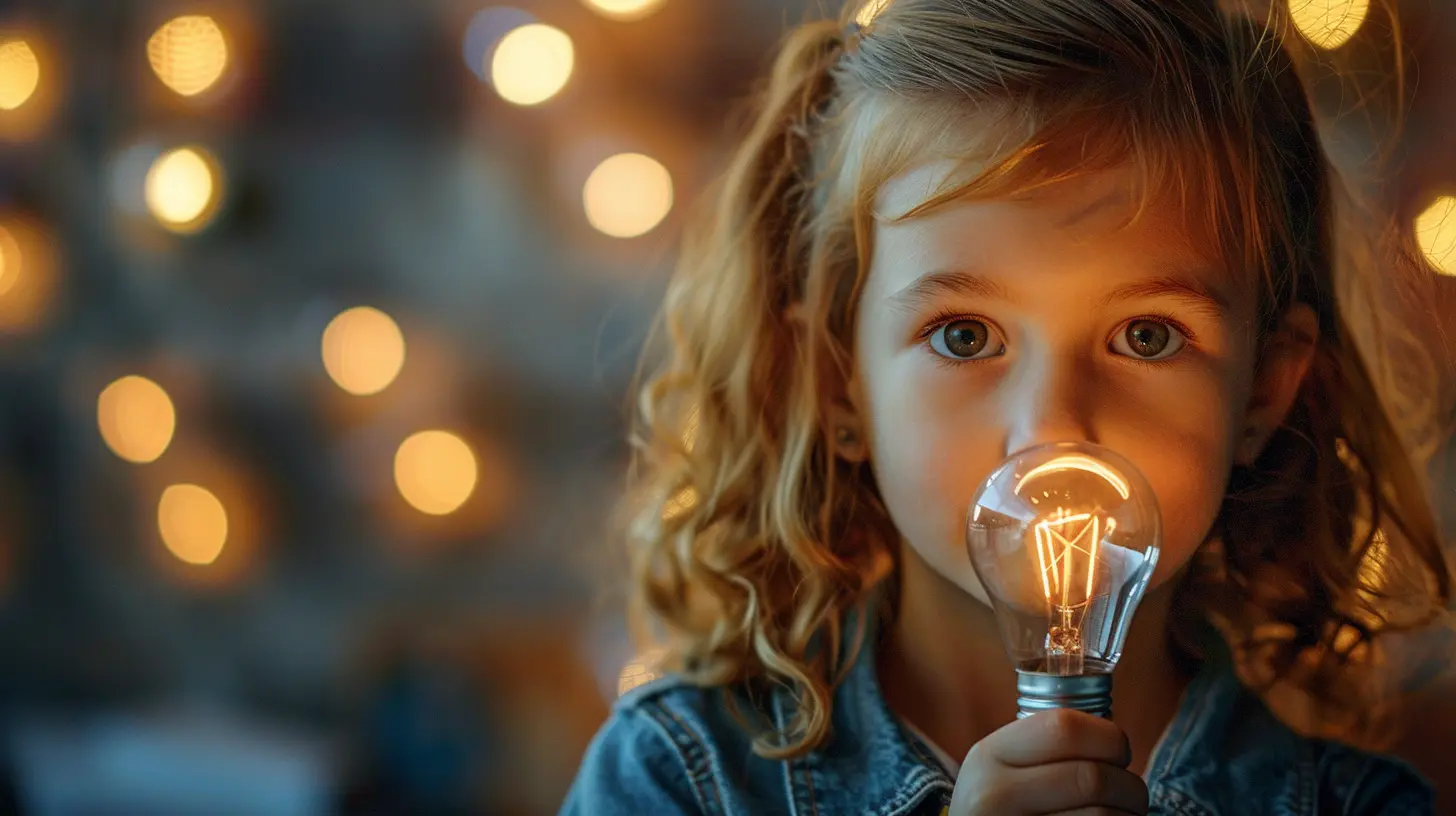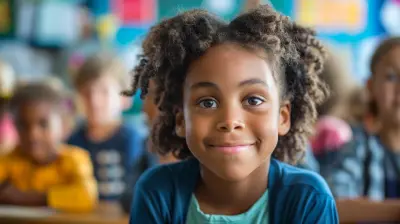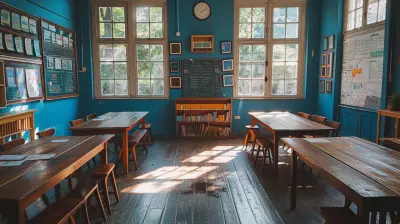The Benefits of Project-Based Learning for Young Minds
27 June 2025
Let’s be real… Traditional classrooms haven’t evolved much from decades ago. Rows of desks, lectures, memorization, rinse and repeat. But young minds? They’re bursting with curiosity, energy, and creativity. And there’s one educational approach that caters to exactly that—Project-Based Learning (PBL).
So, what makes PBL so powerful? How is it shaping smarter, more engaged learners? Let’s roll up our sleeves and take a deep dive into how this teaching method is turning classrooms into launchpads for lifelong learning.
What Is Project-Based Learning, Anyway?
Before we break down the benefits, let's get on the same page about what PBL actually is.Project-Based Learning is a teaching strategy where students actively explore real-world problems and challenges. Instead of being passive listeners, students take center stage, investigating, researching, designing, and creating a project that solves a problem or answers a complex question.
Think of it like this: Instead of reading about ecosystems in a textbook, a group of students might design their own miniature ecosystem, monitor it, and present findings on how different factors affect it. Cool, right?
The learning isn’t just happening—it’s being lived.
Why Young Minds Absolutely Thrive on PBL
1. Hands-On Learning That Sticks
Let’s face it: rote memorization has a short shelf life. How many facts do you actually remember from your 5th-grade history class?With PBL, students aren’t just hearing information—they're using it. They investigate, tinker, present, and solve problems. That makes learning way more meaningful and memorable.
It’s one thing to learn about supply and demand from a graph—it’s another to run a school-wide lemonade stand and understand it first-hand.
2. Builds Critical Thinking and Problem-Solving Skills
Young kids are naturally curious. They ask a bazillion questions a day (just ask any parent). PBL takes that curiosity and channels it into deep thinking.Instead of giving them answers, you give them a challenge, and they figure it out. That’s where the real magic happens.
They learn how to:
- Ask the right questions
- Evaluate sources
- Think from different viewpoints
- Make decisions based on evidence
In other words, they’re not just learning facts. They’re learning how to think.
3. Encourages Collaboration (Because Life Is a Group Project)
Gone are the days of “don’t look at your neighbor's paper.” In the real world, collaboration is key. And that's baked into the PBL process.Students work in teams, share responsibility, and rely on each other’s strengths. They learn communication, empathy, and leadership—all the soft skills that matter just as much as academics.
Plus, they get better at handling conflict, negotiating differences, and compromising. Try getting that from a pop quiz.
4. Sparks Creativity and Innovation
Let’s not sugarcoat it—our education system often squashes creativity. Tests, deadlines, and strict rubrics can do that.But PBL gives young minds the freedom to think outside the box. They can experiment, try new ideas, and fail forward (which, by the way, is one of the best ways to learn).
Whether they're designing a robot, creating a social media campaign, or building a model city, they're flexing their creative muscles.
5. Deepens Understanding Across Multiple Subjects
Here’s a pro tip: Real life doesn’t happen in subject silos.Yet in traditional classrooms, we separate math from science, and history from writing. PBL blends them all together. That miniature ecosystem project? It can include biology, math (measurements and data), art (designing the setup), and writing (documenting the process).
Students see how knowledge connects, and that gives learning a lot more depth and meaning.
How Project-Based Learning Shapes Confidence
Confidence isn’t taught—it’s built. And you know what builds it quickly? Ownership.When students lead a project from beginning to end, they take ownership of their learning. They make decisions. They get feedback. They present their work.
That kind of responsibility? It’s incredibly empowering.
Plus, PBL celebrates process over perfection. Kids learn that it’s okay to mess up, reassess, and try again. That creates a growth mindset. And that? That carries them through school, work, and life.
Makes Learning Fun Again
Let’s not underestimate the power of a little joy. When kids are engaged and excited about what they’re learning, school becomes more than a place—they see it as an opportunity.PBL brings in:
- Real-world relevance
- Student voice and choice
- Interactive and dynamic lessons
Fun isn’t just fluff. When students enjoy learning, they pay attention, work harder, and remember more. It's that simple.
Prepares Them for the Future (A Seriously Uncertain One)
Let’s be honest: we don’t know what jobs today’s kids will have in 15 years. Some of them don’t even exist yet.So how do we prep them? By giving them the tools to adapt, think critically, collaborate, and keep learning.
Project-Based Learning teaches exactly that. It’s not just about what they know—but what they can do with what they know.
Whether they become engineers, artists, entrepreneurs, or something we can’t even imagine yet, they’ll have a toolkit full of transferable skills.
PBL Helps Teachers, Too
Let’s not forget the other MVPs in the room—teachers. PBL lets educators become facilitators and guides rather than just lecturers.They get to:
- Personalize learning
- Connect with students on deeper levels
- Encourage exploration and innovation
- Feel re-energized in their teaching approach
Sure, it takes a bit more planning. But the payoff? Massive. Teachers see their students grow in ways that go far beyond test scores.
Examples of Real-World PBL in Action
Still wondering how PBL plays out in actual classrooms? Let’s look at a few brilliant examples.1. The Sustainable Garden Project
A class studies climate change and sustainability. Then they create a community garden using composting and water-saving techniques. They track plant growth, write reports, and present to the school board.Boom—science, math, writing, and civics in one project.
2. The Local History Documentary
Students interview community elders and create a documentary about the town’s history. Along the way, they learn storytelling, video editing, research skills, and public speaking.You can bet those interviews stick longer than any pop quiz.
3. Student-Run Business
Some schools allow students to create and run their own mini-businesses. Think handmade crafts, baked goods, or a small service like tutoring. Planning, budgeting, marketing, and customer service all rolled into one powerful experience.Challenges of Project-Based Learning (And How to Overcome Them)
Okay, we’ve sung the praises of PBL—but let’s be real. Like any teaching method, it has its challenges.1. Time Management
PBL takes time. It’s not something you squeeze into a 45-minute lesson. But by breaking projects into steps and milestones, it becomes manageable.2. Assessment Difficulties
Traditional grading doesn’t always work well with PBL. But rubrics that measure process, collaboration, effort, and product quality can help.3. Teacher Training
Not every teacher is trained in project-based methods. Professional development and support are key to getting it right.The takeaway? Yes, it takes effort. But the benefits far outweigh the challenges.
How to Get Started With PBL (Even If You're New)
If you're a parent, teacher, or school leader wanting to bring PBL into the mix, here are a few tips:- Start small. Even a mini-project makes a difference.
- Let students help build the project idea. Voice and choice matter.
- Focus on real-world problems. Relevance fuels curiosity.
- Encourage reflection. Ask what worked, what didn’t, and what they learned.
- Celebrate the journey, not just the outcome.
You don’t have to overhaul your entire curriculum overnight. Small steps create big changes.
Final Thoughts
Project-Based Learning isn’t just a buzzword—it’s a game-changer.For young minds craving engagement, relevance, and autonomy, it’s the golden ticket. It transforms education from a passive experience into an active adventure. It makes learning mean something. And most importantly, it prepares kids for the real world in the most meaningful way possible.
So whether you’re raising, teaching, or mentoring a young learner, consider this your sign: dive into the world of PBL. Because the future belongs to the curious, the creative, and the confident—and that’s exactly what project-based learning nurtures.
all images in this post were generated using AI tools
Category:
Early Childhood EducationAuthor:

Madeleine Newton
Discussion
rate this article
2 comments
Rachael Myers
Project-Based Learning: Turning kids into mini Einsteins while secretly letting teachers enjoy that sweet, sweet caffeine boost from late-night grading. Who knew learning could be this energizing?
October 29, 2025 at 5:06 AM
Harmony McElhinney
Project-Based Learning isn't just an option; it's a necessity. It empowers young minds to think critically, collaborate effectively, and unleash their creativity. Let’s embrace this transformative approach without hesitation!
July 9, 2025 at 2:37 AM

Madeleine Newton
Thank you for your insightful comment! I completely agree—Project-Based Learning is essential for fostering critical thinking, collaboration, and creativity in young learners. Let's champion this transformative approach together!


